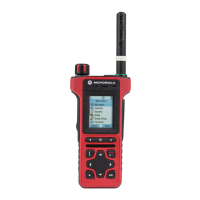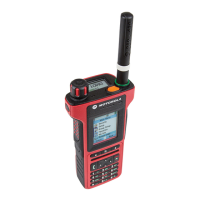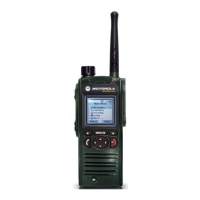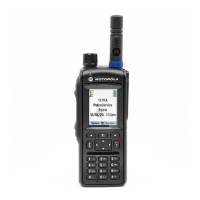GPS Support 2-49
March 2009 Chapter 2 - MTP850 Ex/MTP810 Ex Product Information Manual 6866588D21-D
16 GPS Support
The terminal is equipped with a GPS receiver with which enables it to ascertain its own location.
The terminal provides Location Reports in various circumstances:
• On request;
• Triggered by specific events (for example status transmissions, emergency, power on/off);
• At specified time intervals;
• At specified distance intervals.
The reports are sent using a protocol which is based on existing standards, using SDS as a
transport layer. SDS User Defined Data Type 4 and the customer can provision the terminal to either
use SDS-TL (for added reliability) or no SDS-TL (for saving air interface resources). The TETRA
standard Protocol Identifiers for GPS will be used - 3 for simple GPS (no SDS-TL) or 131 if SDS-TL
is used.
The location data are stored in the non-volatile memory of the terminal, for later retrieval.
If the terminal is provisioned to provide user indications, the user is notified of the feature’s
operational status.
If the terminal is provisioned with to provide the terminal user with position information, the user will
be able to view the terminal’s position and the status of the satellites that are in view.
The GPS feature can be enabled or disabled as a whole by the CPS. Also, the parameters of the
feature can be configured by the CPS, or over the air. CPS configuration provides a default profile,
which can be overridden by commands received over the air. The profile assigned to the terminal
will determine when to send location data, what data to send with what accuracy and to what
address to send the data.
All data requests and configuration commands received over the air are checked to confirm they
have come from a trusted source. Only ISSIs in a specified range may send location commands.
Note: Both the terminal and application receiving location messages from the terminal have to be
configured with the same protocol ID otherwise the terminal will report a failure when
requested to send an Immediate Location Report for example.
17 Man Down Feature
The Man Down feature allows alerting other terminal users and the console dispatcher that
something unfavorable is happening to the terminal user.
An emergency call and a status are generated after a programmable period of time that has passed
since the radio entered adverse conditions.
The terminal alerts when:
• its tilt exceeds a predefined angle value.
• it remains static for a predefined period of time.
Only these Man Down settings that are enabled in the CPS may be activated or deactivated using
the terminal menu or by a one touch button.
If the Man Down feature is deactivated with a one touch button, the terminal plays an audio tone
once. If the feature is deactivated using the menu, the terminal does not play the tone.
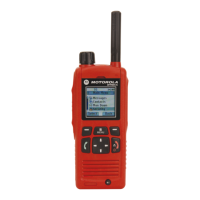
